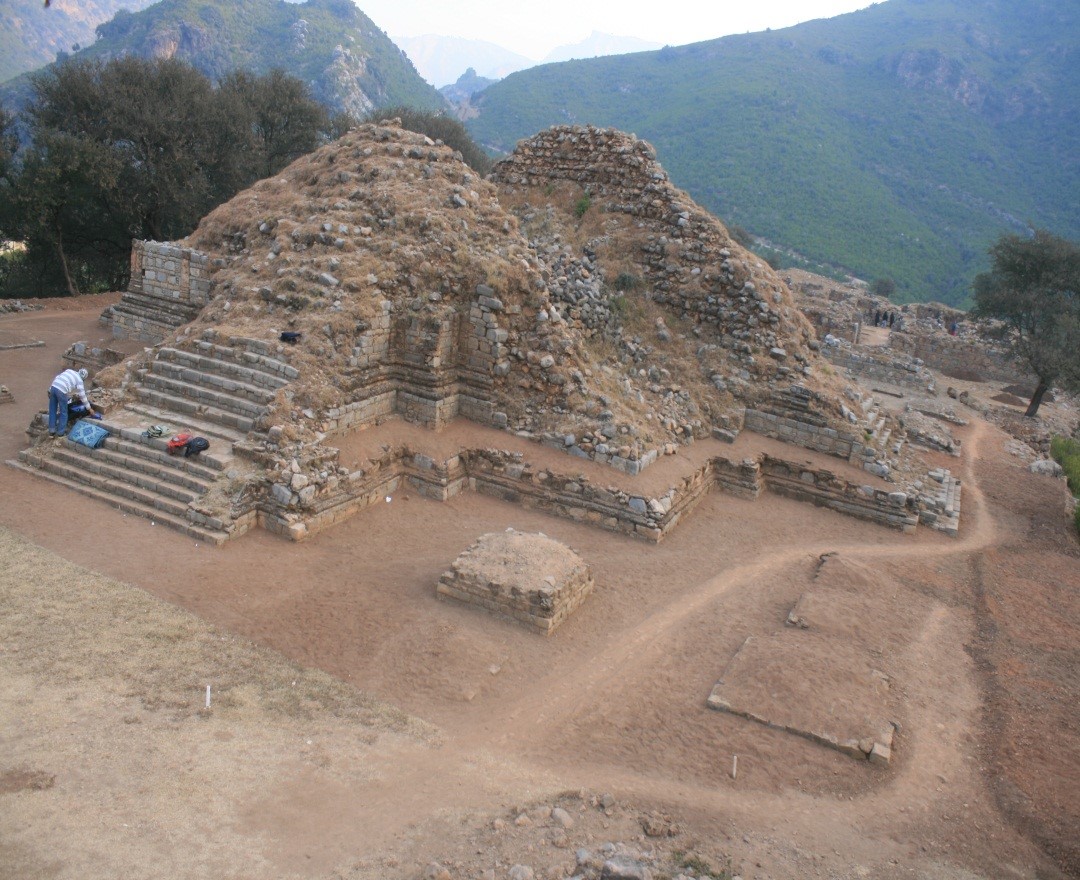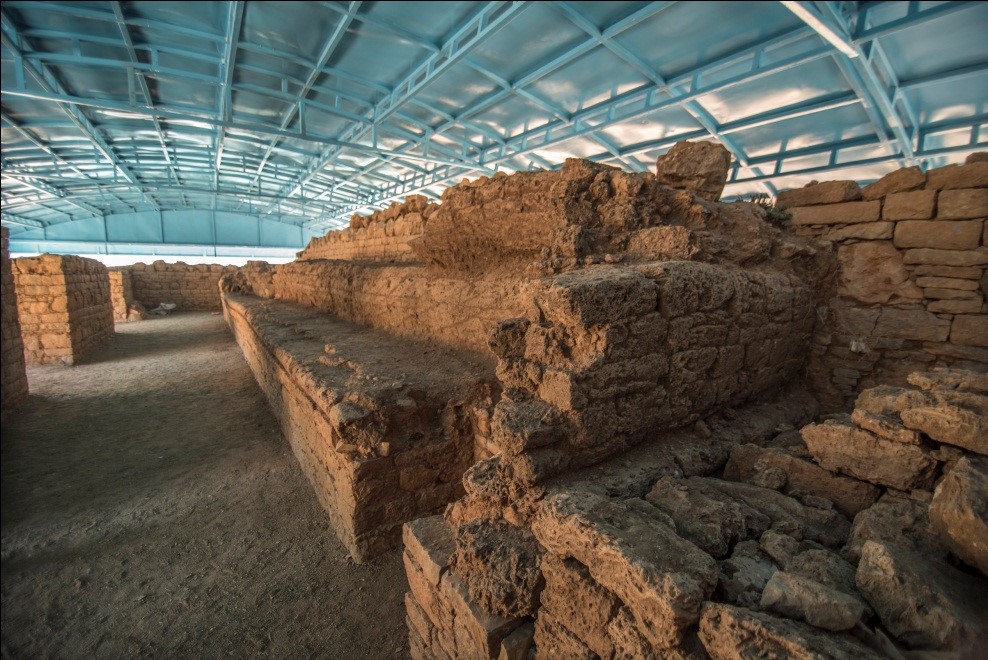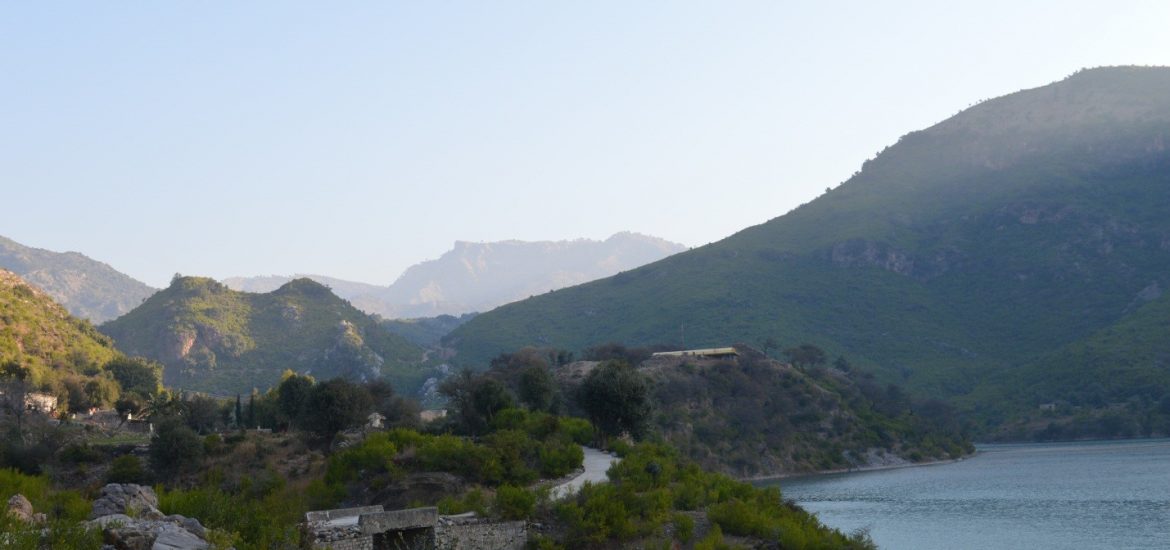The site of Bhamala is criminally under-studied, even though some of its landmarks are fairly recognizable to Buddhist scholars and archeologists. Like much of Pakistan’s Buddhist heritage, it is mostly local institutions and provincial governments driving archeological work, which sometimes flies under the radar of Anglophone media. Furthermore, the sites themselves are hard to figure out since there is very little written about them – yet what they represent, chronologically and in terms of the antiquities and sculptures discovered in those places, are of unmatched significance.
Bhamala is situated in the Khanpur Valley, a sub-valley of the Taxila Valley. It is on the hill near a reservoir that dams the River Haro. There have been three major seasons of expedition digs – 1930–31 by Sir John Marshall (1876–1958), 2012–13 by the Department of Archaeology at Hazara University, and 2014–15 by the Directorate of Archaeology and Museums, Government of Khyber Pakhtunkhwa (KPDOAM). The main landmarks, according to the KPDOAM, include a main stupa, a secondary stupa, chapels, votive stupas (most likely erected as tributes to donors funding the complex, the chamber with the famous Parinirvana Buddha, and a well-established monastery comprising of 28 cells, a kitchen, an assembly hall, a water tank, and a bathroom. The complex in its totality was included in the UNESCO list of protected sites in 1980.

According to some scholars, “Bhamala” is a Punjabi word that means “an area damaged by an earthquake,” which could allude to folk memories of a natural disaster having hit the locality. Yet did some kind of earthquake occur before the complex was completed, or after? Did the earthquake cause the complex to be eventually abandoned, or was the monastic habitation vacated over a number of decades or centuries, especially with the decay of Buddhist popularity and influence in the region over time? Marshall speculated that due to the burnt earth in the cells and the monastery courtyard, the monastery should have been destroyed by fire. Fire during an earthquake is possible, but most fingers have been pointed at the White Huns, a loose confederation of related nomads that conquered North India and the Punjab region, of which KP was then a region of.
If the most recent dating of the site is correct – according to the second and third seasons of expeditions, the 3rd to 4th centuries CE – then Bhamala was possibly at the heart of Buddhist developments that saw not only evolutions in what would come to be known as Mahayana thought, but also the spread of this nascent Mahayana Buddhism across Asia. In the late 4th Century, the year of 384, a monk from Gandhara called Marananta (Chi. 摩羅難陀; Kor. 마라난타) travelled to the Korean Peninsula from Jin China to preach the Dharma to the Kingdom of Baekje’s King Chimnyu. Might Marananta – or any of his associates – have known about, travelled to, or even resided at Bhamala? These are some of the tantalizing historical narratives that have not yet been told to connect a human story to magnificent locales like Bhamala.

Which brings us to the Parinirvana Buddha (there are others, but this is without doubt the oldest), in a chamber that can only be accessed through three openings. The Parinirvana Buddha is 14 meters in length and was discovered by the third season of excavation. The image is shattered, with the head missing and other parts like the upper left leg and arms damaged or missing. This is most likely due to illegal diggers, robbers, and unscrupulous looters. Yet the remnants, such as the right leg, left leg fragments with drapery, and fragments of the right foot and shoulders, are awe-inspiring. The dais on which the image was placed is also incredible: 15 meters in length, making the overall Parinirvana scene the largest in Pakistan and the country’s only image to have been made in sand-coloured Kanjur stone.
The chamber is made of stone in semi-ashlar masonry, and the Buddha image is one of the oldest in the world, dating back 1800 years. At least, that is the timeline indicated by carbon-dating from smaller figures found at the Parinirvana frieze, as well as coins found in the vicinity. I am confident that future seasons (most likely to be steered by the KPDOAM) will make carbon dating the Parinirvana Buddha itself a research priority.
In the next post, we will explore the numismatic and architectural aspects of the Bhamala complex, including the monastery itself and unearthed antiquities, but also its stupas and coins. These are particularly important for two reasons: stupas are devotional structures that are erected by the pious, and can reveal the life of a community in ways different to what we discover from “functional” rooms like accommodation, kitchens, or meditation cells. Coins, however, represent the mercantile aspect of the Buddhist story, which was incredibly important for Buddhism in its first millennium. Coins discovered at Bhamala indicate the presence of some kind of monetary wealth: perhaps donations to the monks? Were they brought here by returning clergy, or were they left here by devout merchants, some of whom might have supported the construction of the complex itself?
Such are the human stories (including the eventual abandonment and destruction of the site) that we must begin to tell ourselves, through educated guesses and historically accurate reconstructions, to connect the physical to the emotional, and to slowly reveal – even if only partially – how Buddhism, short of the Buddha himself and the Order’s first five centuries, actually came from places like Bhamala, and indeed other places we find in KP and Pakistan.

This article was written in collaboration with the Digital Heritage Center of the Directorate of Archaeology and Museums, Khyber Pakhtunkhwa (KPDOAM)
Related blog posts from BDG
The Throne of Origins: The Pulsating Heart of Pre-Sectarian, 2000-year Buddhism


